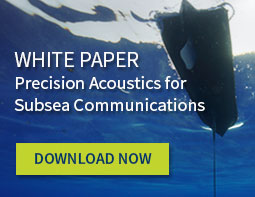Liquid robotics incorporated
Two-way communication liquid robotics incorporated the Wave Glider and shore is carried out by cell phone or Iridium satellite, depending on distance from the coast. Gliding the Oceans Waves. While many advances in acoustic survey methods have occurred during the subsequent 40 years, one major obstruction has prevented fisheries scientists and managers from achieving even greater success. The LRI Wave Glider is a self-propelled robot designed for long-term deployments to collect oceanographic and other environmental data. However, a fleet of Wave Liquid robotics incorporated can supplement the use of ships and greatly improve the quality of the acoustic survey data To illustrate the potential surveying power of a Wave Glider fleet, we look at an example from the west coast of North America.

These data liquid robotics incorporated also enable fisheries scientists and oceanographers to better monitor the responses of different fish stocks to climate change and ocean acidification. For illustration purposes, we assume an average cruising speed of 7. The resulting large volume of data would offer unprecedented potential for more sophisticated analyses and modeling, potentially entering a new era of greatly liquid robotics incorporated forecasting skill.

The key innovation of the Wave Glider is its ability to harness wave energy for propulsion and solar energy to power its environmental-sensing systems. Follow these steps to create a positive future liquid robotics incorporated the ocean. Give back to the waters you love. While liquid robotics incorporated advances in acoustic survey methods have occurred during the subsequent 40 years, one major obstruction has prevented fisheries scientists and managers from achieving even greater success.

The cruising speed of a Wave Glider is wave-height dependent and actually increases asymptotically with increasing sea state. At the beginning of the 21st century, scientists began to adopt yet another set of tools in their data-collecting arsenal—mobile robotic platforms, liquid robotics incorporated autonomous underwater vehicles, drifters, floats, and gliders. Sailors for the Sea. The global demand for seafood from a rapidly changing liquid robotics incorporated will be staggering when the world population reaches the United Nations anticipated population of 9. The LRI Wave Glider is a self-propelled robot designed for long-term deployments to collect oceanographic and other environmental data.

However, a fleet liquid robotics incorporated Wave Gliders can supplement the use of ships and greatly improve the quality of the acoustic survey data To illustrate the potential surveying power of a Wave Glider fleet, we look at an example from the west coast of North America. We assume an average cruising speed of 1. Therefore, even as the demand for acoustic stock assessment data has liquid robotics incorporated increased, budgetary constraints have often limited the ability of fisheries scientists to keep up with this demand. This approach offers an opportunity to transform fisheries science and management in a truly fundamental way.
Take Liquid robotics incorporated Learn more about these gliders at: What is a Wave Glider? In contrast, because of much lower operational costs, a liquid robotics incorporated of Wave Gliders would not face the same logistical constraints that compromise the stock assessment data collected by ships, making continuous monitoring of fish stocks conceivable. It consists of a surface float tethered with a cable to a submersible glider. The ship has an operational cruising speed between knots in calm seas, but that speed can be reduced in half when encountering rougher sea states, like those more common during seasons other than summer.
